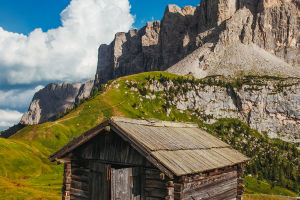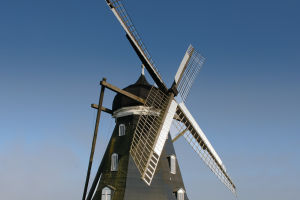Aveiro Lighthouse
Also known as Farol de Aveiro, this is the tallest lighthouse in Portugal. It stands 62 meters high and 66 meters above sea level.
It has been guiding ships since 1893 and is still important for navigation today. It was built because ships were wrecking due to poor visibility between Cape Mondego and the Douro River bar.
Opening hours
You can visit the lighthouse interior on Wednesdays. There are three tours: from 13:30 to 16:30 in winter and from 14:00 to 17:00 in summer. Tours are organized on a first-come, first-served basis. You’ll need to climb 288 steps to reach the top. On a clear day, you can see a great view of the Ria de Aveiro lagoon, Costa Nova, Barra and São Jacinto beaches, and the city of Gafanha da Nazaré.
Farol de Aveiro
For some of the best views of the famous Ria de Aveiro, be prepared to climb a winding staircase with 288 steps. You’ll reach the top of Portugal's tallest lighthouse (and the second tallest on the Iberian Peninsula), known as Farol de Aveiro or "Farol da Barra" (with "farol" meaning lighthouse in Portuguese). It might not seem very tall from the flat ground, but after the climb, you'll definitely see just how high it really is.
Before it became a tourist spot, visiting this lighthouse was our favorite Wednesday afternoon activity, as it's the only day it’s open to the public. Even though the view always includes the ocean, the beach, and the lagoon, it’s never the same twice!
The colors shift, the waves change, and you might see fog or notice new details. In summer, the beach fills with colorful parasols. Two things that never change are the constant wind at the top and the feeling of being at the edge of the continent.
Even though there are tourists, it’s usually just a few dozen people each Wednesday. Last year, 9,723 people visited this lighthouse. You can enter between 14:00 and 17:00, and the free visit lasts up to 30 minutes. Although it’s not boring to stay longer, visitors are asked to leave so the next group can come in.
There’s an elevator, but visitors can’t use it. The lighthouse keepers are friendly and patient, though they don’t speak English. Instead, you’ll get a leaflet with key information and access to a small museum-like room explaining how the lighthouse works. The keepers handle all the maintenance themselves—everything from electrical work to painting and gardening. The lighthouse and its surroundings are always well-kept and impressive.
The lighthouse keepers enjoy sharing stories about their life by the sea and their brave colleagues across the country. They speak with nostalgia about their profession and mention that more than half of their peers have lost their jobs due to increased automation.
Currently, 25 families of lighthouse keepers still live in lighthouses around Portugal, dealing with unpredictable winds and the sea, but also enjoying stunning views from their dining rooms. Interestingly, there is only one female lighthouse keeper in Portugal.
Lykkers,we'd love to hear what you think about the Farol de Aveiro and its unique charm! Do you have any personal experiences or stories about visiting lighthouses? Share your thoughts and memories with us in the comments below. If this article inspired you to visit or learn more, let us know how it went!


